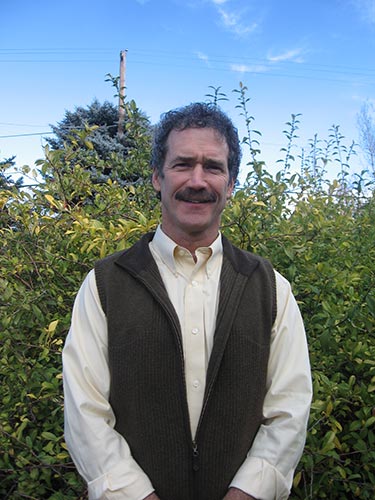
American Forests Science Advisory Board member Dr. Jonathan Kusel is the founder and executive director of Sierra Institute for Community and Environment. His research focuses on social indicator use and evaluation, community well-being and assessment and community-based group processes. Some of his accomplishments include leading an assessment of the first federally mandated, natural resource-focused collaboratives — the Resource Advisory Committees associated with the Secure Rural School and Community Self-Determination Act.
Why did you choose to go into natural resource sociology?
I enjoy working with and studying rural communities and how they affect and are affected by resource management. I not only wanted to contribute to learning about rural places and forests, but to translate and share the knowledge I’ve gained in ways that result in improved resource management and social and economic outcomes.
What was the most difficult moment that you’ve experienced in pursuit of your work?
Working on President Clinton’s Forest Ecosystem Management Assessment Team, which developed the Northwest Forest Plan, there was too little time to do all that was needed to make it as good as I wanted it to be. Knowing that what we were doing was going to affect the lives of tens of thousands of people across the Pacific West and that there was inadequate time to work through disagreement among scientists added to the difficulty.
Do you have a favorite story from your years in the field?
I have a number of favorite stories, and they often involve research that has real-world outcomes. Working on a participatory research project with mushroom harvester groups in southeastern Oregon, I worked with others conducting campground meetings in six different languages, including multiple southeast Asian languages, Spanish and English. We reduced violence in the woods and overcame a deep mistrust and fear of U.S. Forest Service officials, resulting in the harvesters themselves mapping and sharing their oftentimes secret mushroom sites with the Forest Service, which then planned timber harvesting and other activities in ways to protect those areas.
If you weren’t a scientist, what would you be?
A great horned owl.
Where is your favorite spot to experience nature and why?
In addition to my home in Indian Valley in the northern Sierra, the deserts of Utah. The area has always held a special place in my heart for the austere beauty and the natural elements that push nature and the soul. That I met my wife there adds a bit as well.
What is your favorite aspect of your field?
Working with rural people to get them involved in science, engaging people in what they do and where they work and learning from them.
What is the most surprising thing that you have learned in the course of your work?
There is a disconnect between rural and urban areas: Too many urban people don’t know about rural areas beyond the natural resources or about the working landscapes that contribute to their lives. A good example is that southern Californians have little idea where their water comes from (the mountains in the north of the state) and the role of forests in producing that water.
What do you think the biggest issue facing forest health is today?
Lack of understanding and an unwillingness of people to genuinely engage and learn.
Where was the most memorable place you were able to travel to in the name of science and why?
I remember vividly a Resource Advisory Group in southwestern Mississippi and my research studying collaborative group work in communities there. I learned the counties that were successful with collaborative work were building on the gains made through the Civil Rights Movement. Nearby counties that had not been successful and did not engage in collaborative work had not moved beyond some of the longstanding civil rights challenges.
Who is your favorite fictional scientist and why?
I don’t have one, but I think of science fiction writers and how the good ones push our thinking. Ursula Le Guin comes to mind.